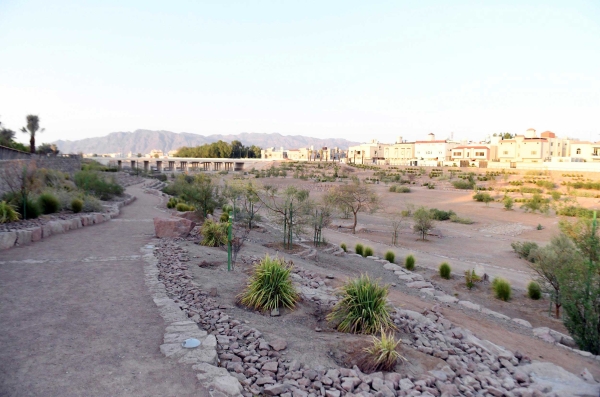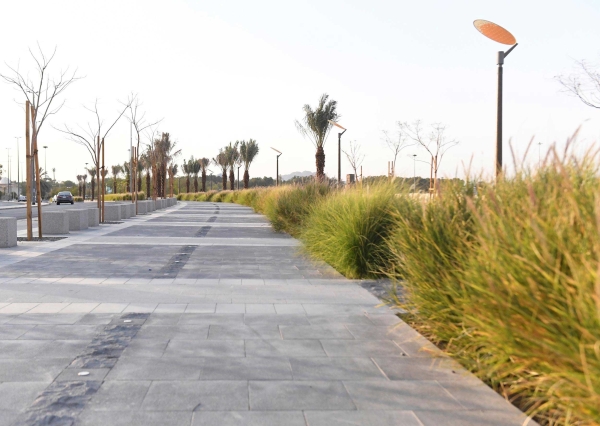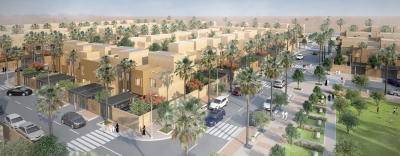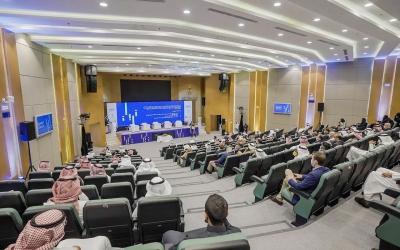
The Environmental Rehabilitation Project of Wadi al-Aqiq


The Environmental Rehabilitation Project of Wadi al-Aqiq is a project launched by al-Madinah Region Development Authority in the Kingdom of Saudi Arabia. The project aims to preserve the natural environment of Wadi al-Aqiq, restore its function as a natural water drainage basin, rebalance the environmental and natural aspects of the valley, and revive its cultural identity. It is a key outcome of the comprehensive plan for Wadi al-Aqiq.
Activities of the Environmental Rehabilitation Project of Wadi al-Aqiq
The Environmental Rehabilitation Project of Wadi al-Aqiq aims to balance development with the preservation of the natural state of Wadi al-Aqiq and its surrounding areas. The rehabilitation and development activities extend for approximately fifteen km, starting from the Miqat Dhul Hulayfah area in the south of al-Madinah al-Munawwarah and reaching al-Jurf area in the north. The project also includes areas along the banks of the valley, such as the Palace of Urwah Ibn al-Zubayr, the intersection of Salam Road, and the Islamic University Square, reaching the agricultural areas in al-Jurf.
The development works of the valley include the creation of a walkway covering an area of 16,500 m and extending 1,600 m in length, with an average width of fourteen m for the pedestrian paths. The walkway features 227 trees providing shade over the pedestrian paths, seventy-seven palm trees adorning the open spaces along the banks of the valley, and 850 small trees distributed along the paths. The walkway surfaces are paved with basalt and granite stones to prevent slipping.
The walkway has a capacity of 4,500 people per hour and is equipped with sixty-five LED lighting poles to enhance the area's illumination. Additionally, there are 980 ground lighting points distributed geometrically, nine aesthetically designed plazas, 287 rest and waiting areas along the walkway, and 120 parking spaces.
The first phase of the Environmental Rehabilitation Project of Wadi al-Aqiq
The first phase of the Environmental Rehabilitation Project of Wadi al-Aqiq was designed based on several hydrological studies that ensure the valley's watercourse is protected during the rainy seasons. These studies aim to safely accommodate the water volume flowing through the valley.
The design aspects included enhancing the ecosystem to harmonize and integrate the relationship between humans and the environment. The project avoided using construction materials to preserve the natural state of the valley. A total of 124 types of local plants were planted, and various forms of biodiversity, including insects, birds, and some mammals, were observed.
The first phase of the Environmental Rehabilitation Project of Wadi al-Aqiq was completed in December 2020. This phase covered an area of 1.7 km out of a total of fifteen km that will be developed in subsequent phases within the urban area.
The second phase of the Environmental Rehabilitation Project of Wadi al-Aqiq
The second phase of the Environmental Rehabilitation Project of Wadi al-Aqiq was launched on June 12, 2023, extending over three km with an average width of the valley reaching 184 m, situated between the Miqat Mosque and the historic Palace of Urwah Ibn al-Zubayr.
The objectives of the Environmental Rehabilitation Project of Wadi al-Aqiq
The Environmental Rehabilitation Project of Wadi al-Aqiq aims to enhance the urban landscape in al-Madinah al-Munawwarah Province by preserving a pollution-free environment, coordinating public facilities in harmony with the valley's environment, reducing the risks of floods and flash floods, creating job and investment opportunities, transforming the valley into an attractive open area for residents and visitors, increasing green spaces, and protecting historical sites.
The historical significance of Wadi al-Aqiq
Wadi al-Aqiq is one of the valleys of al-Madinah Al-Munawwarah, integral to its history and present, as it has been mentioned in historical and geographical books that documented the cultural and social aspects of the blessed city in the past. The name of the valley became associated with the Prophet's biography, distinguishing it from others and earning a special place in the hearts of Muslims. It is narrated in Sahih al-Bukhari by Umar Ibn al-Khattab, may Allah be pleased with him, that he said: I heard the Messenger of Allah, peace be upon him (PBUH), in Wadi al-Aqiq saying: 'Tonight a messenger came to me from my Lord and asked me to pray in this blessed valley.' It became renowned by this name thereafter.
Wadi al-Aqiq descends from about one hundred km south of al-Madinah al-Munawwarah, skirting Mount Ayr from the west, passing through Dhu al-Hulayfah, and merging with Wadi Bathan to the east near the Qiblatain area. It then continues its descent slightly northeast and then north, meeting Wadi Qanat coming from the east of the city near the Zaghabah area, heading towards the northeast. In some past eras, the valley resembled a perpetually flowing river, and palaces were built on its banks, especially during the Umayyad and Abbasid periods. Among the palaces built on its banks is the palace of Sa’d Ibn Abi Waqqas, some remains of which still exist, the palace of Urwah, and the palace of Sukaynah Bint al-Husayn.
Related quizzes
Related articles

